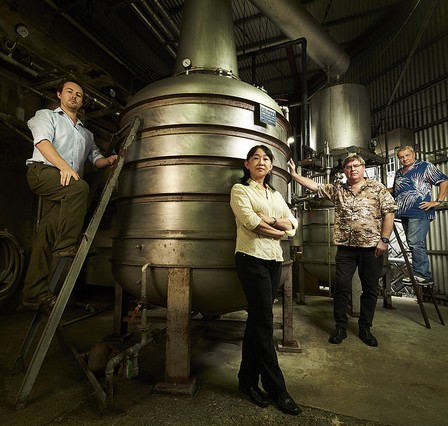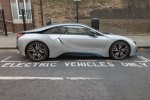Types of fuel cells
There are several different types of fuel cells...
...just like there are different kinds of batteries.
What they have in common is the proton (H+) driving electrical energy.
The different kinds of fuel cells are are used for various jobs, from powering cell phones to generating electricity for power grids. Some operate at high temperature, some at lower temperatures; some types use pure hydrogen gas as fuel, others use methanol or diesel or other hydrocarbons.
Come on in and see what the different fuel cells can do.
Why is it called a “fuel cell”, though? Who knows.
The word FUEL itself, which dictionary.com describes as “material such as coal, gas, or oil that is burned to produce heat or power” would seem to imply “internal combustion”, right?
Not this time!
In a fuel cell no burning is ever involved. Fuel cell technology uses oxidation of fuel, not combustion.
PEM Fuel Cells
The kind of fuel cell technology that is used in a car is called the PEM fuel cell, with PEM meaning Proton Exchange Membrane.
Some features of this type of fuel cell are:
- High power density;
- lightweight and small;
- solid polymer electrolyte (which is why you can also sometimes find these called “polymer exchange membrane” fuel cells);
- fueled with H2 gas;
- platinum catalyst;
- quick start up; and
- low temperature operation (80° C)
PEM Fuel Cell: How it Works
Air on one side, a mix of oxygen and nitrogen gas, with hydrogen gas on the other (that's what they're calling 'dihydrogen' in the video); platinum cracks the hydrogen gas apart into two protons, which are collected and rounded up to do some electrical work. That electrical work is either powering an electric motor to run the car, or recharging the car's battery pack.
Direct Methanol Fuel Cells
- Fueled with pure methanol;
- Used in portable applications like cell phones and laptops.
Direct Methanol Fuel Cells: Powering the Future
Alkaline Fuel Cells
- First type of fuel cell developed;
- Used in the US space program to produce electricity and water on board the spacecraft;
- Electrolyte is potassium hydroxide in water.
Phosphoric Acid Fuel Cells
- Used for stationary power generation and even sometimes for big buses;
- More tolerant of impurities in the fuel than other fuel cell types;
- 85% efficient when used to generate both electricity AND heat (though only 40% efficient when used to generate only electricity, but that is still better than the 33% efficiency of generating electricity by means of combustion);
- Less power-dense than other types;
- Large and heavy;
- Require more platinum, so more expensive than other types of fuel cells.
Molten Carbonate Fuel Cells
- Used for natural gas and coal power plants to increase efficiency;
- Operate at high temperature (650° C);
- More efficient than phosphoric acid fuel cells;
- Do not require an external reformer to convert fossil fuels into hydrogen because of high temperatures, which lowers costs;
- Do not require platinum because of high temperatures, which also lowers costs;
- Low durability because of the high operational temperatures and corrosive electrolyte, so cell life is about 5 years.
Carbonate fuel cells can concentrate CO2 from coal or natural gas power plants for capture and sequestration, lowering the plant's carbon footprint.
The Role of Carbonate Fuel Cells in Carbon Capture and Storage
Reversible Fuel Cells
- Produce electricity from hydrogen and oxygen gas, generating heat and water as byproducts...
- but also can use electricity from solar, wind, and other renewables to split water into hydrogen and oxygen gas;
- During periods of excess power production, can store excess as hydrogen gas.
- Very useful for renewables!
For more information, an easy to read chart comparing various types of fuel cells and their pros and cons can be found here at the US Energy Department website.
So to summarize the types of fuel cells...
There are several types of fuel cells in use today, and we've touched on just a few here. Some of them are used in fuel cell cars, some in huge applications like megawatt energy production; others are small enough to fit in your pocket and are recharged with droppers full of methanol.
- Fuel cells can use different kinds of fuel, from methanol to hydrogen gas to diesel.
- Some fuel cells operate at high temperatures, while others, like the ones which power a hydrogen fuel cell car, operate at low temperatures.
- Fuel cells can be used to generate water, like the ones that are found on the space shuttle;
- They can capture carbon from other power generating sources, such as coal or natural gas power plants;
- Fuel cells can store excess produced energy in the form of hydrogen gas; and
- They can power cars, trucks, and ships with zero tailpipe emission.


